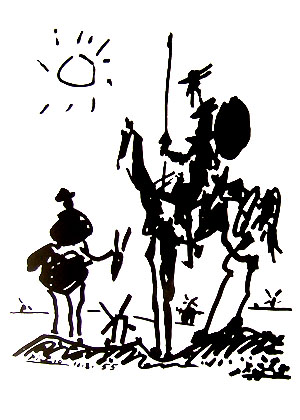Receptive Shift
A key polarity in human functioning is between instrumental mode (acting upon), and receptive mode (being acted upon.) There is an overlap but not an identity between this polarity and the polarities of being and doing, masculine and feminine, and sympathetic and parasympathetic. Below is a table summarizing differences in the two modes.
Adapted liberally from Deikman, The Observing Self
| Instrumental Mode | Receptive Mode |
|---|---|
| To act on the environment | To receive the environment |
| Understanding in terms of objects and manipulation of objects | Understanding in terms of processes and participation in them |
| Mobility | Motility |
| Focal attention | Diffuse attention |
| Sharp perceptual and cognitive boundaries | Blurred boundaries |
| Interest in forms more than sensory | Sensory more than an interest in forms |
| Linear casualty | Simultaneity |
| Logical thought | Intuition |
| Language | Music, art, poetry |
| Left hemisphere dominates | Right hemisphere dominates |
| EEG: increased beta waves, decreased alpha and theta waves | EEG: decreased beta waves, increased alpha and theta waves |
| Past/Future | Now |
| Sympathetic nervous system | Parasympathetic nervous system |
Survival and accomplishment both dictate the instrumental mode, at least part of the time. However, pleasure and contact require the receptive mode. Our culture more and more repudiates the receptive mode. Instead the attitude toward nourishment and renewal is to take and take--which of course is the the instrumental mode. Power and control require a constant dedication to the instrumental mode. Continuous existence in the instrumental mode may allow accumulation of material goods and power, but because of the lack of receiving anything into the body, literal energetic and emotional starvation results.
The instrumental mode at its extreme leads to objectification. To simplify, this is when everything the ego perceives is known by its function for that ego. This extends even to the body in which the ego resides. Most people today have a double obstacle to receptivity, character armor and a cultural bias toward power and control. Passivity is not receptivity. Receptivity is an active process. 'Withstanding' or 'enduring' something is an instrumental act not a receptive one. Clearly today a strong receptive shift is needed by most people in our culture to achieve well-being. Vacations used to have this purpose
Objectlessness
Because receptivity does not require objectification of the world, objectlessness is the extreme end of the receptive pole. It is the opposite of objectification. It is perhaps what Krishnamurti means by 'choiceless awareness.' At this point a quantitative change may also become a qualitative one. The phrase 'one with the world' is often employed. Alexander Lowen called this joy. Subjectively the experience is blissful. There is a certain defenselessness inherent in objectlessness, so it should not be undertaken in a predatory environment.
Enlightenment, Liberation, Nirvana
There is a universally reported feeling of sufficiency that goes a long with objectlessness. Some traditions describe this as supra-natural and qualitatively different than mere health. The Reich and Lowen tradition does not speak to actual enlightenment or anything other than the natural. With attaining mind so strong in our culture, there is always the worry that enlightenment can be treated as an object and pursued as an illusion of superiority, or an illusion of over-coming the body. Also, enlightenment as an aspiration may serve as a rationalization to side-step adult responsibility--normal daily concerns might be considered petty.
Meditation
A goal and benefit of meditation is a strong receptive shift that can balance the enormous instrumental bias of our culture. Meditation is a strong measure, that changes brain waves patterns as well as autonomic balance. It has the potential to produce strong objectlessness. As suggested above, experience has shown many instances where communities that emphasize meditation have turned abusive. Also, suppressed feeling and anxiety can be released precipitously before the development of bodily self-possession. (The yoga tradition developed yogasana and pranayama to prepare the body for meditation.) Meditation is not the only practice to provide a receptive shift but it is the most direct. Because the lack of inherent safeguards in the practice, a safe 'container' for the practitioner is usually indicated. Traditionally this container has been a wise knowledgeable teacher. However in this arena, as mentioned above, commitment to a teacher or a teacher's organization has on occasion led to exploitation. Yet solo practice may not be without some danger. The practice of meditation in our modern society seems to call for care and prudence
